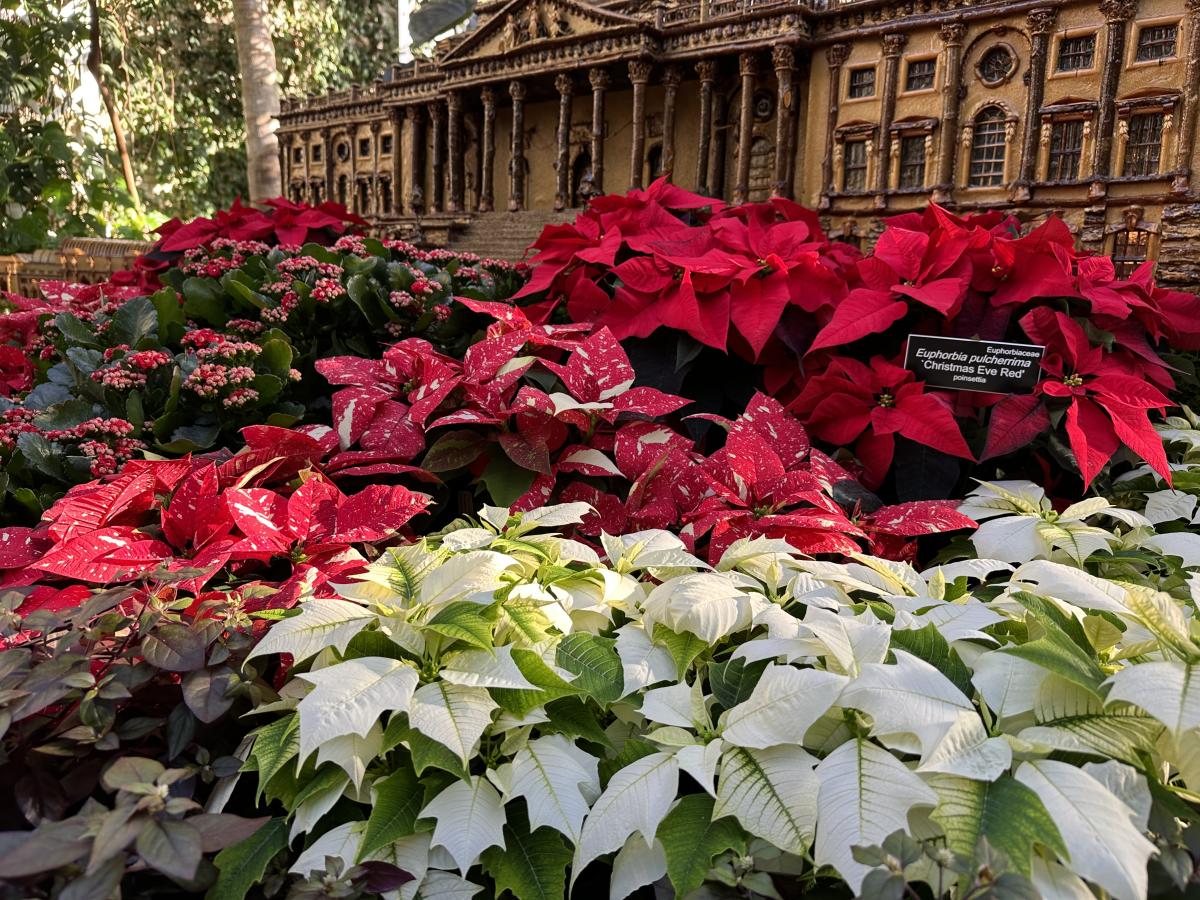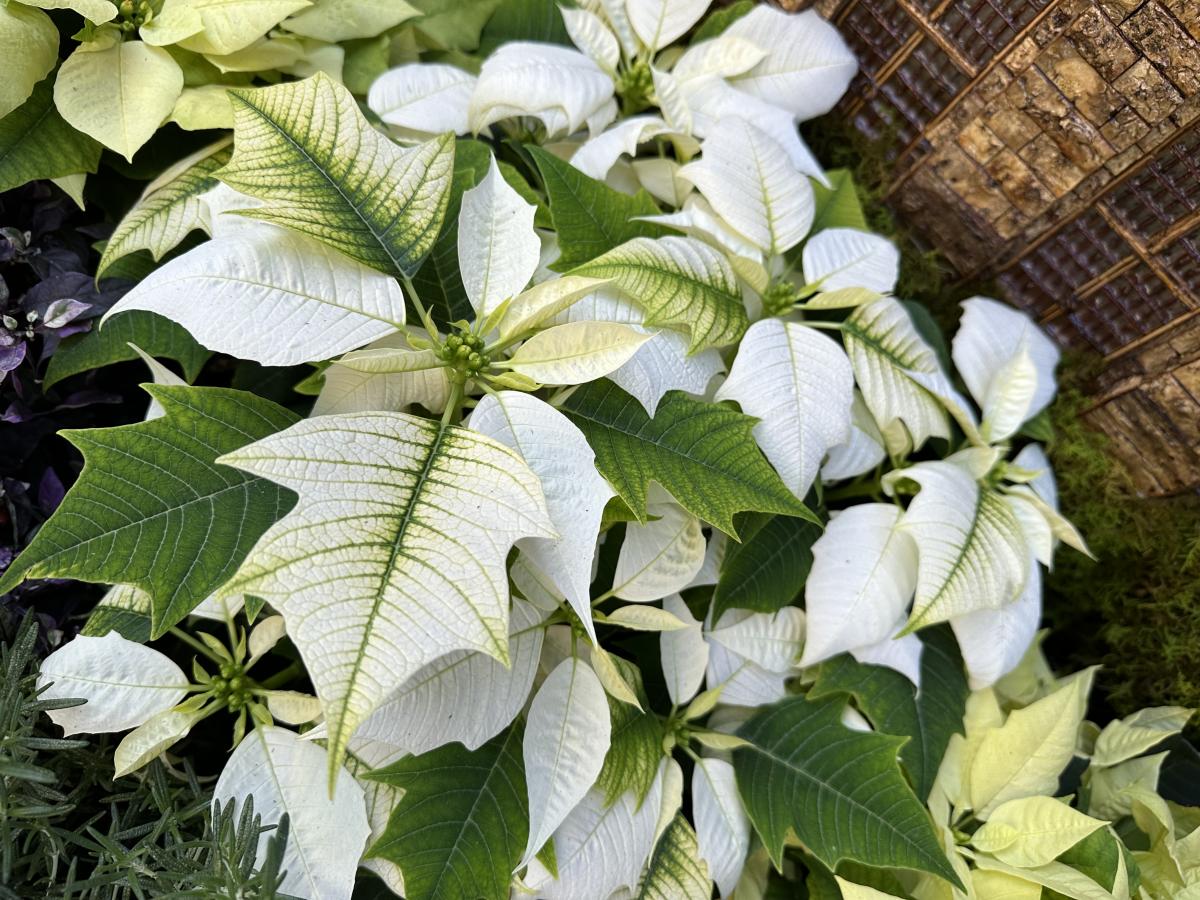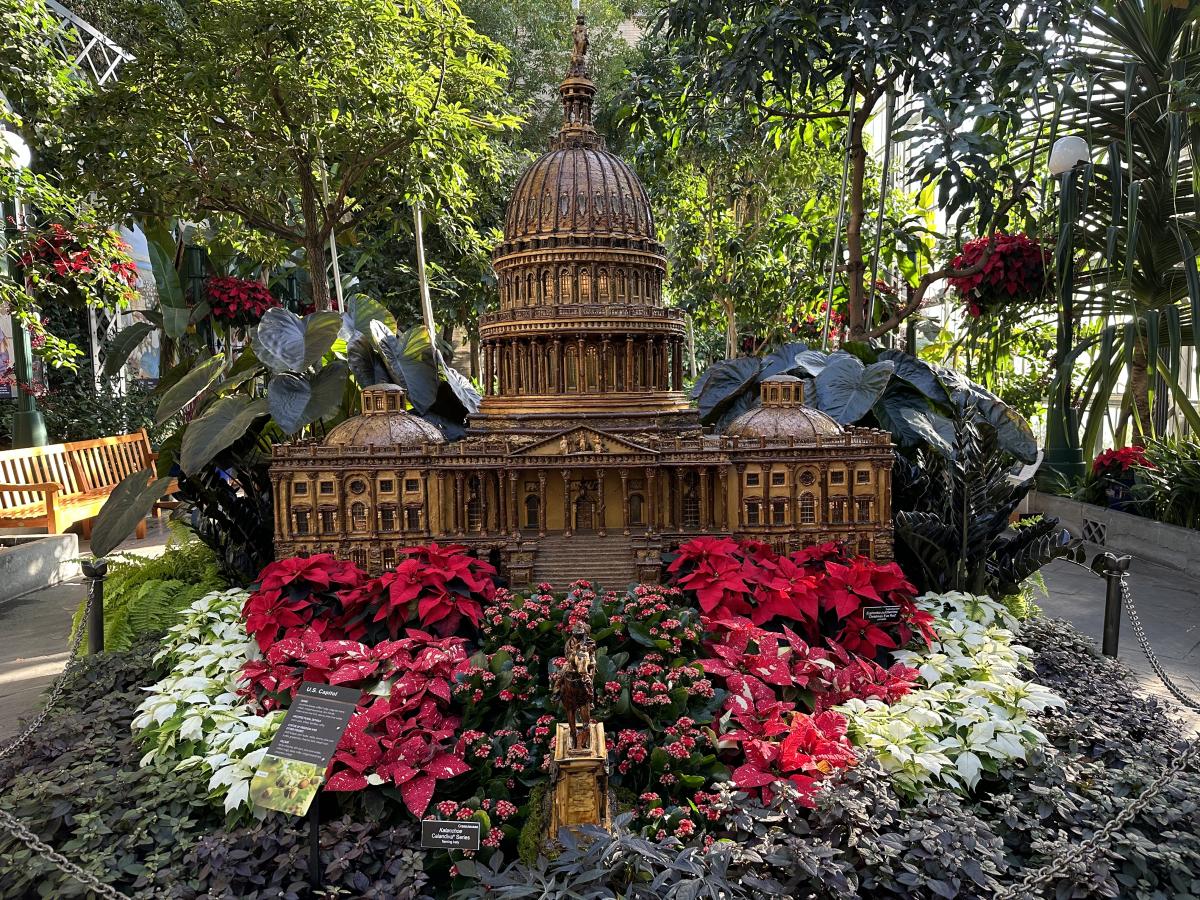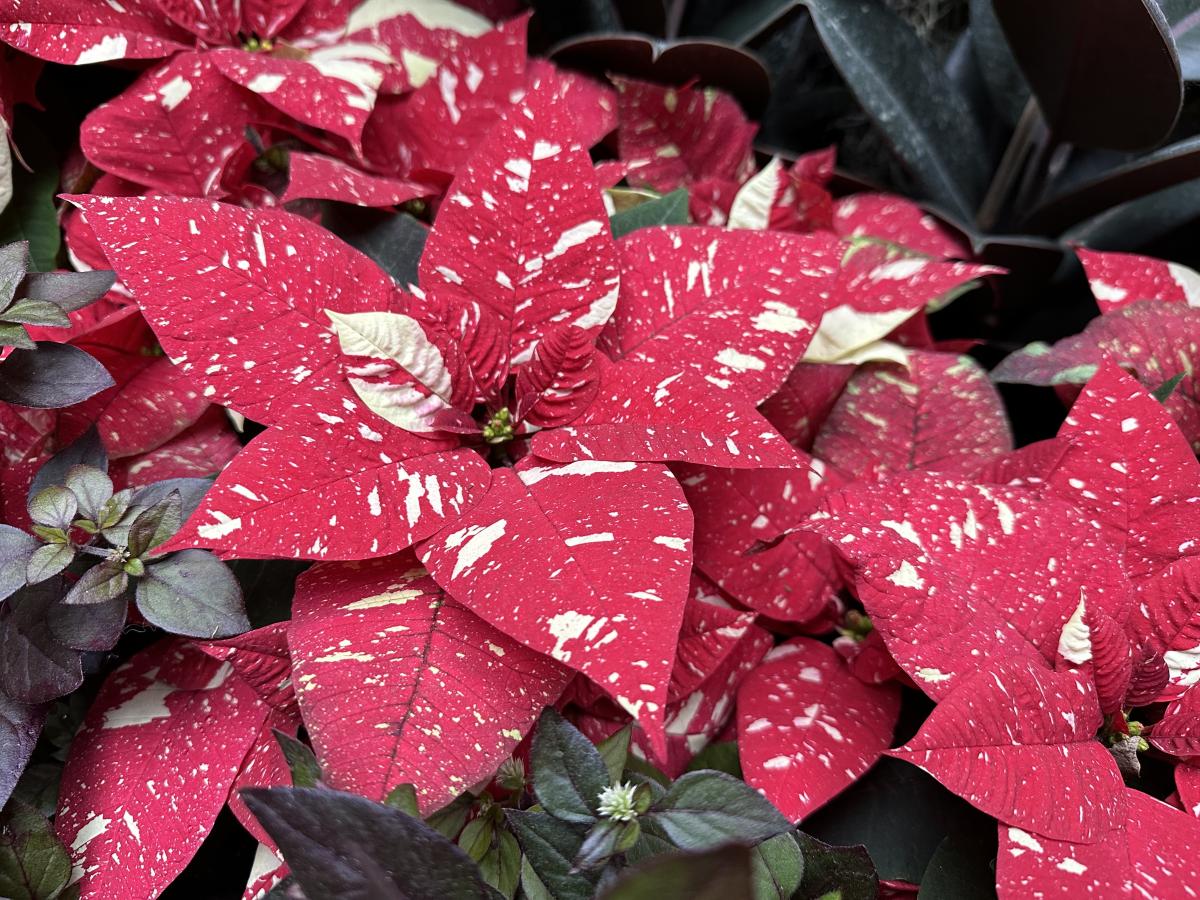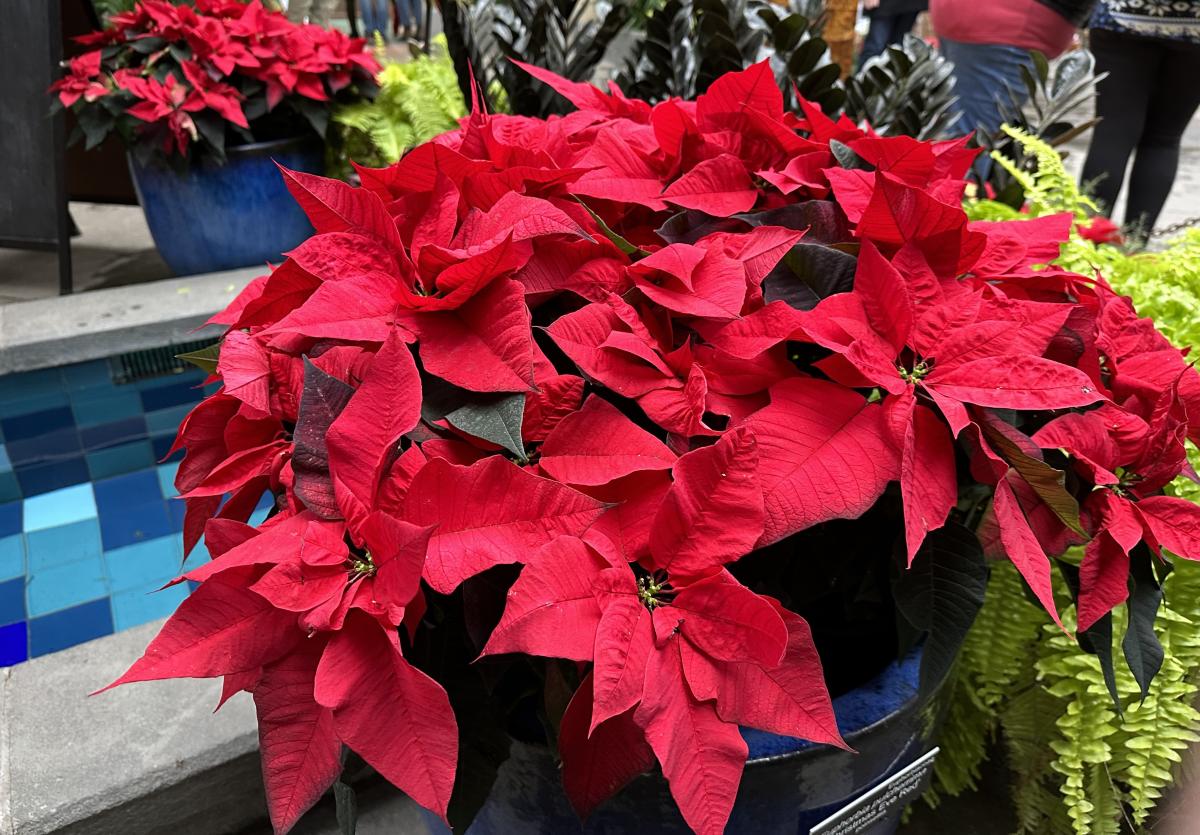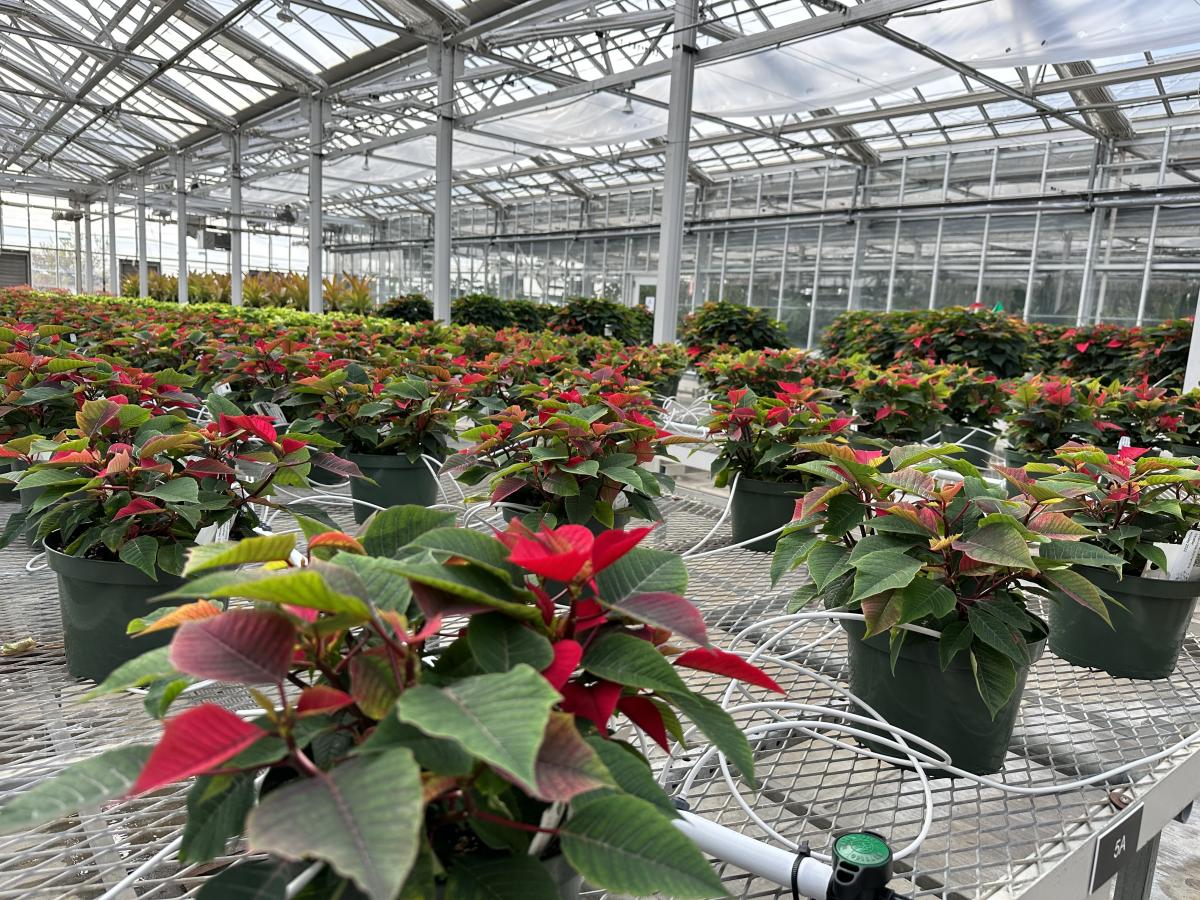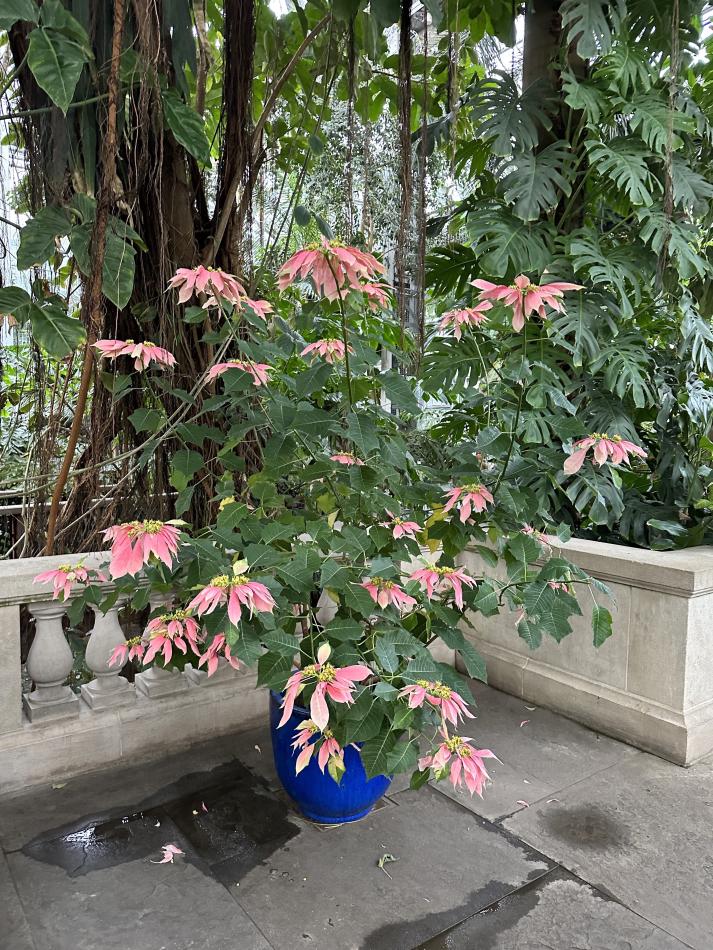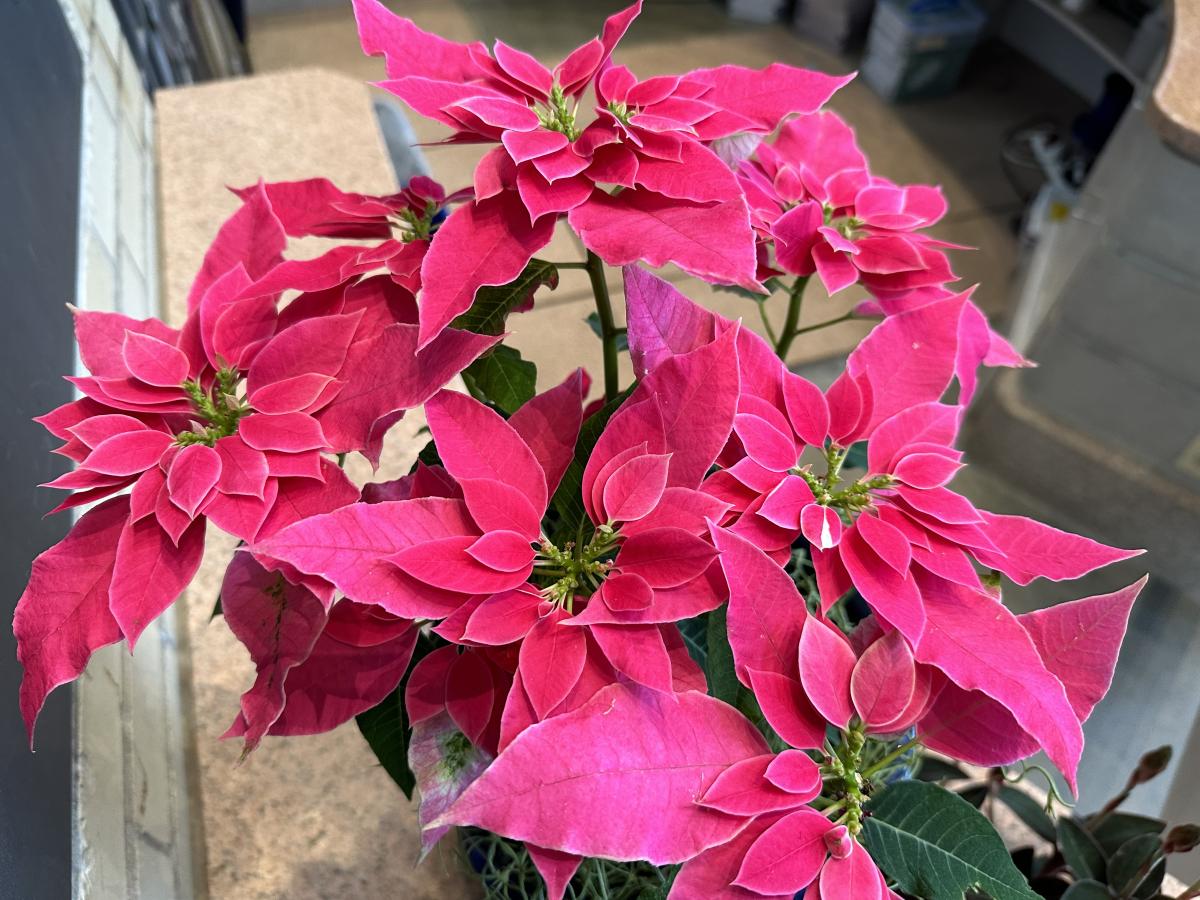If you stop by the U.S. Botanic Garden (USBG) through January 2 , you can see the deep reds of 'Christmas Eve Red' or the unusual rounded bracts of ‘Christmas Mouse® Red’ resembling small mouse ears. You might also enjoy finding 'Superba™ New Glitter' with its splashes of cream throughout the red bract or 'Green Envy' displaying unexpected light lime green colors. These are just a few of the more than a dozen varieties of poinsettias (Euphorbia pulcherrima and hybrids) in the USBG's 2022 poinsettia display.
The gardeners have grown almost 2,000 poinsettia plants to brighten up the Conservatory's annual holiday exhibit “Season’s Greenings" and celebrate the stories of this plant that is now closely tied to American winter holidays. But this wasn't always the case. It has just been in the last 50 years that the poinsettia has crossed into mass production and become a staple in American homes every December.
The poinsettia is native to the deciduous tropical forest of the Pacific coast of southern Mexico. There it grows as a large, lanky shrub reaching up to 30 feet in height, where it blooms in late fall. The plant's common name refers to Joel Roberts Poinsett, the first U.S. Minister to Mexico, who sent seeds and samples of the plant back to the United States in the late 1820s.
During the 1800s, the poinsettia was a greenhouse curiosity often used as a short-lived, but distinctive, red cut flower. It wasn't until the 1920s and 1930s that additional colors were brought into the trade. In the 1960s, the introduction of varieties that produced bushy, compact plants led to mass production and marketing. Breeders continue to develop long-lasting poinsettias, and more than 100 new cultivars are in development.
Lots of care and patience
For gardeners, poinsettias are one of the most nail-biting crops to grow. There is a lot of pressure in making it a perfect yield. Typically, poinsettia crops require a very specific date for coloring up and looking spectacular. At the USBG, an expert team of gardeners cares for the annual poinsettia crop with daily attentiveness starting in July. A myriad of challenges lurk along the way including insects, diseases, and watering challenges — so many things can ruin the crop.
Gardener Howard Luckey leads the nurturing of the poinsettia crop, with the help and support of the entire Exhibits and Displays team. Multiple gardeners use their extensive horticultural knowledge and experience to ensure this holiday crop is ready for its big debut in late November.
Trying new materials and systems
This year, Luckey did a trial of growing poinsettias in a new planting medium, planting just over 12% of the crop in coconut coir as opposed to the typical peat-based potting media. Coconut coir, made from fiber of the outer portions of a coconut, is a more sustainable resource than peat and also provided added cost savings.
Luckey determined the coconut coir doesn’t hold water as much as peat, so it is a bit more forgiving if slightly overwatered. The coir provided more air capacity over peat, allowing more air to get to the roots, leading to less root rot.
The plants in coconut coir grew faster and larger at the beginning, though by the time it was ready for the plants to go on display, many plants equaled out in size. Ultimately, Luckey says the coconut coir performed well. Since it is a more sustainable medium, he hopes to try it again next year perhaps in a greater quantity.
Additionally, Luckey used a drip irrigation system for the poinsettia crop for the first time this year. This more targeted watering system allows for more uniform, precision watering that reduces overall water use.
Living history on display
The USBG's poinsettia display showcases new varieties that are just now appearing for sale in garden centers or are still being trialed and could become available in the next few years as well as some historic specimens.
Find the historic ‘Ecke Pink’ poinsettia on display in the Tropics house. This variety was the first pink colored poinsettia, created in the 1940s by the Ecke family in Southern California. The Eckes were the largest breeder of poinsettias in the U.S. for many decades, essentially creating the poinsettia market in this country.
Of the new varieties, few have produced more questions and comments than the new Princettia® and Luv U series hybrids. The hybrids display a profusion of brighter floral bracts (the colorful leaves that frequently get mistaken for poinsettia flowers) ranging from intense red and pink colors to pure white with smaller, darker leaves than traditional poinsettias. They are a cross between Euphorbia pulcherrima and Euphorbia cornastra.
The new line of breeding has reinvigorated the holiday popular crop with its brighter colors and abundance of bracts. Come see new hybrid cultivars in the USBG display, and maybe locate gardener Howard Luckey’s vibrant favorite 'Luv U Pink.' We think you’ll find your own new favorite variety in this beautiful plant exhibit on display through January 2, 2022.
For more information about visiting the USBG during the holidays, visit www.USBG.gov/SeasonsGreenings.
